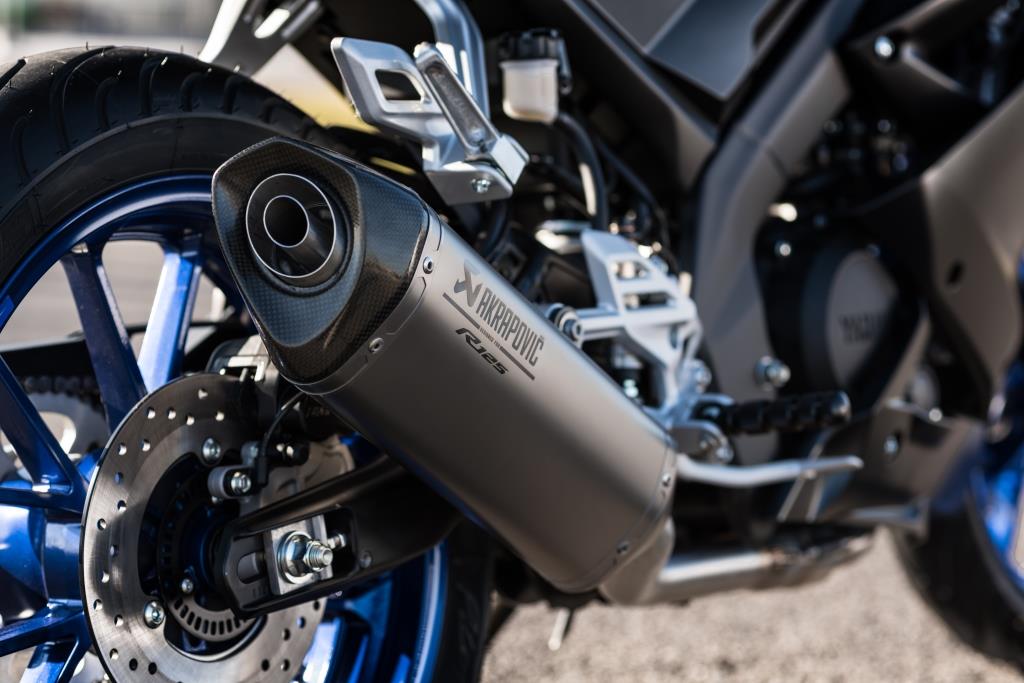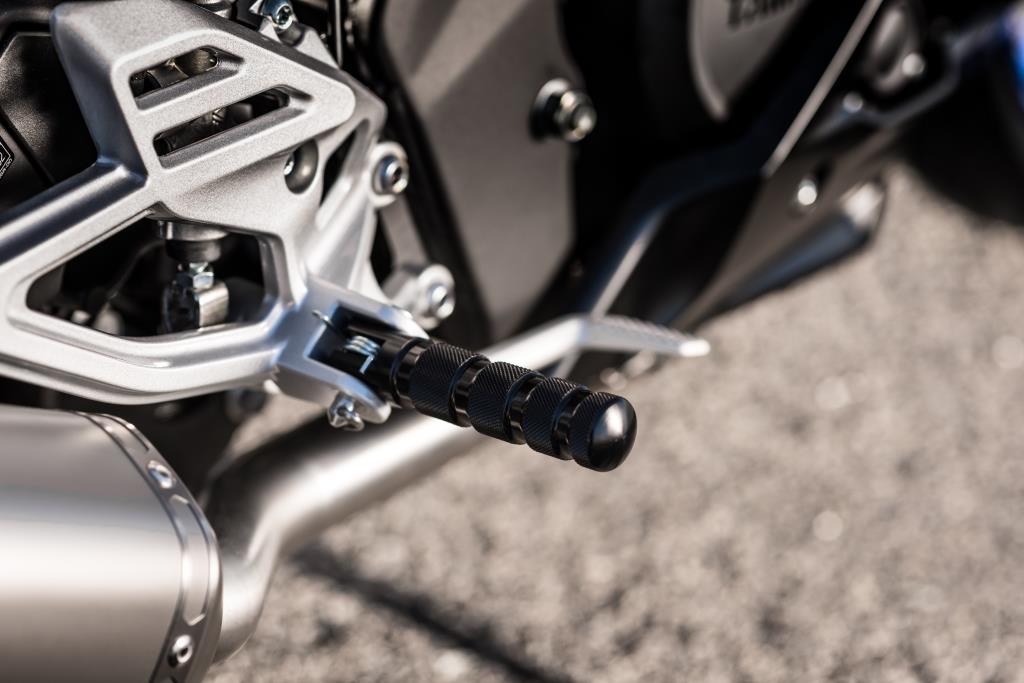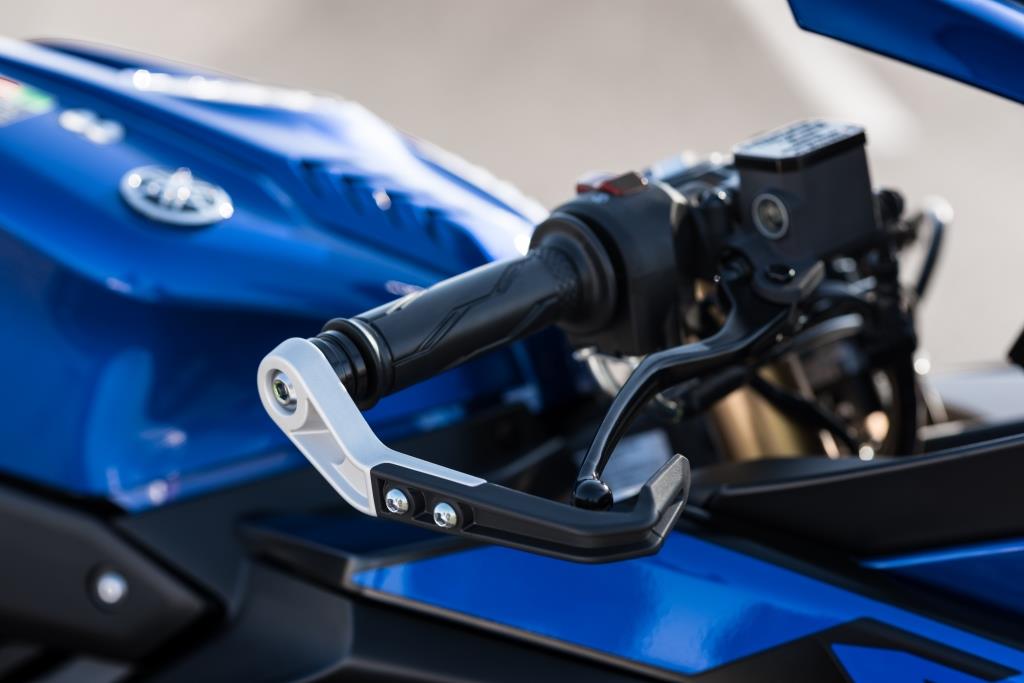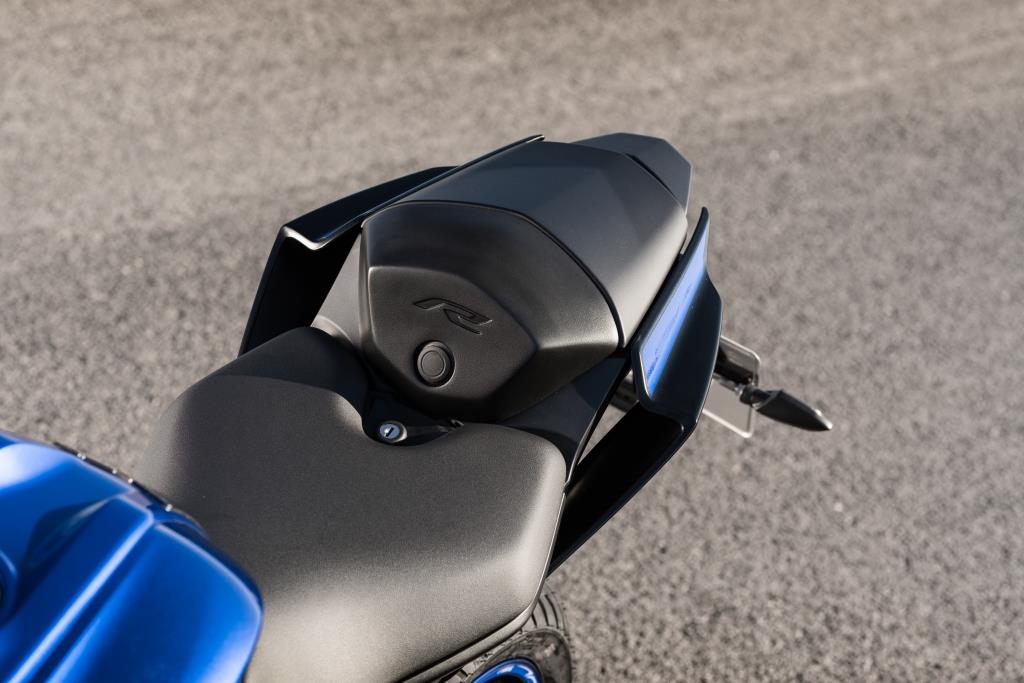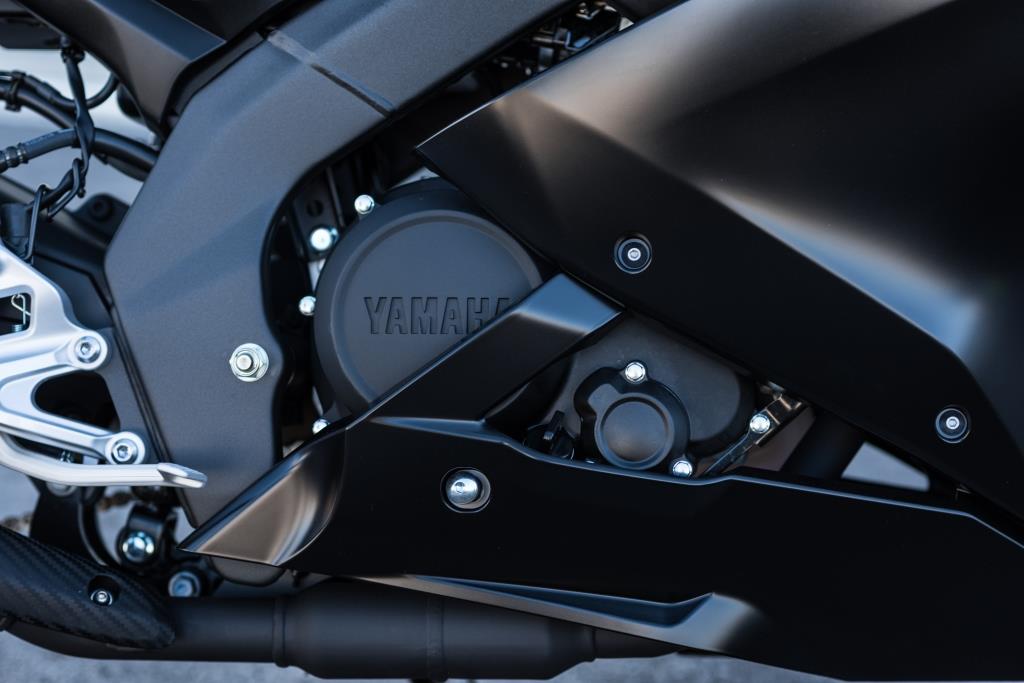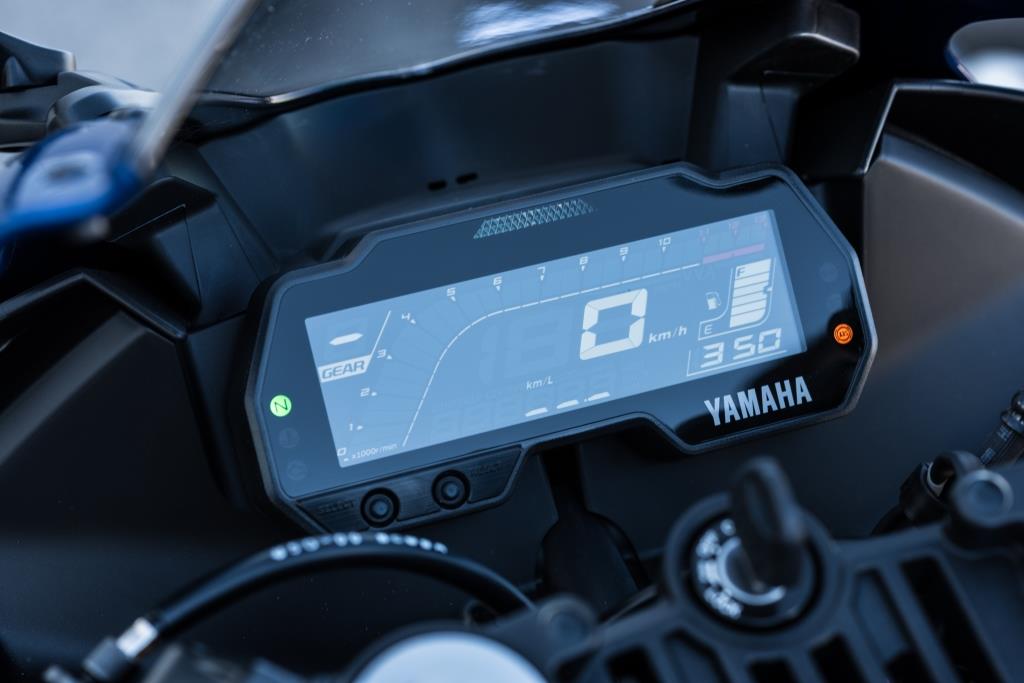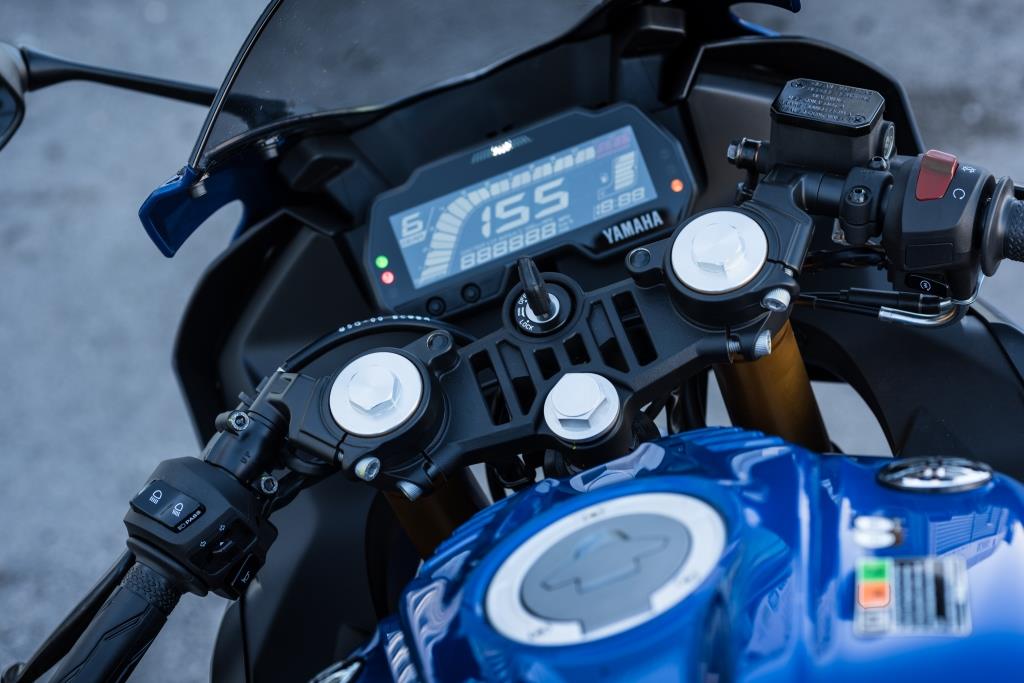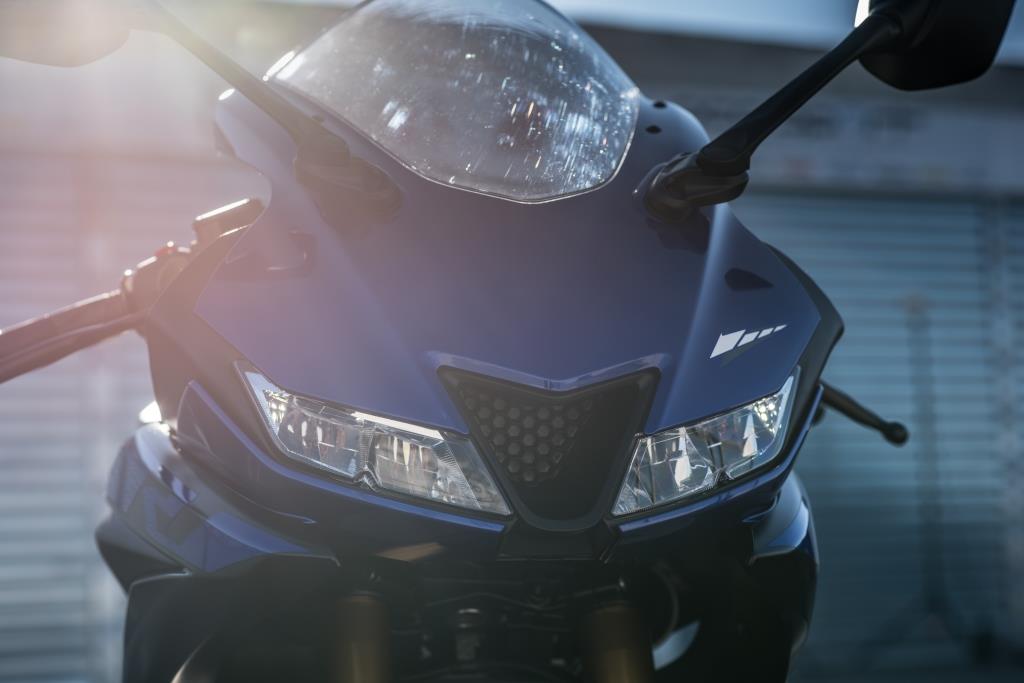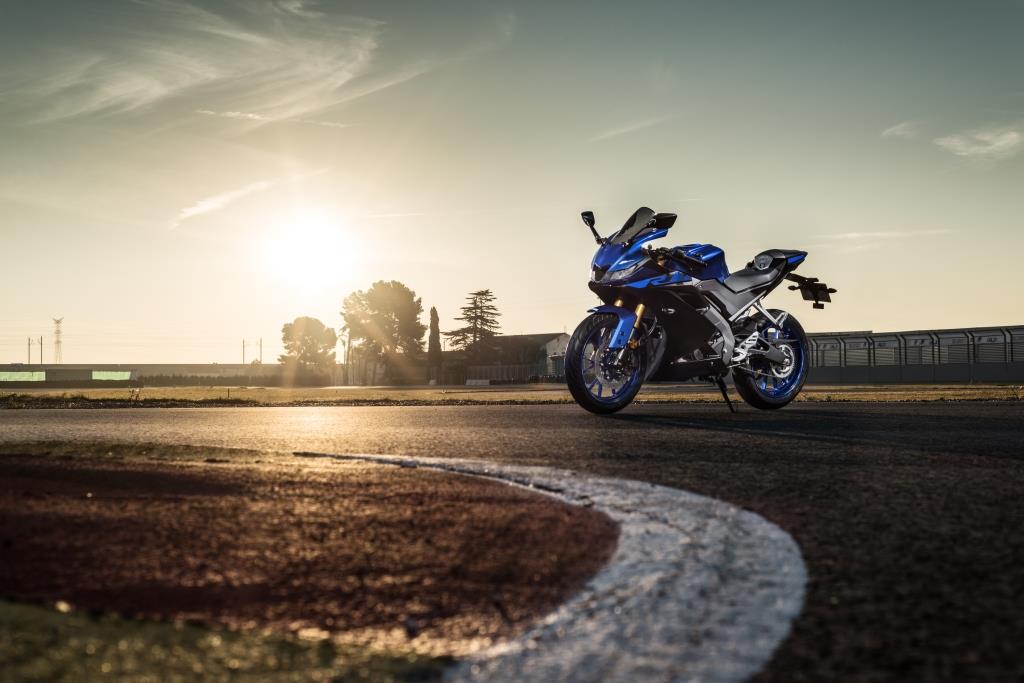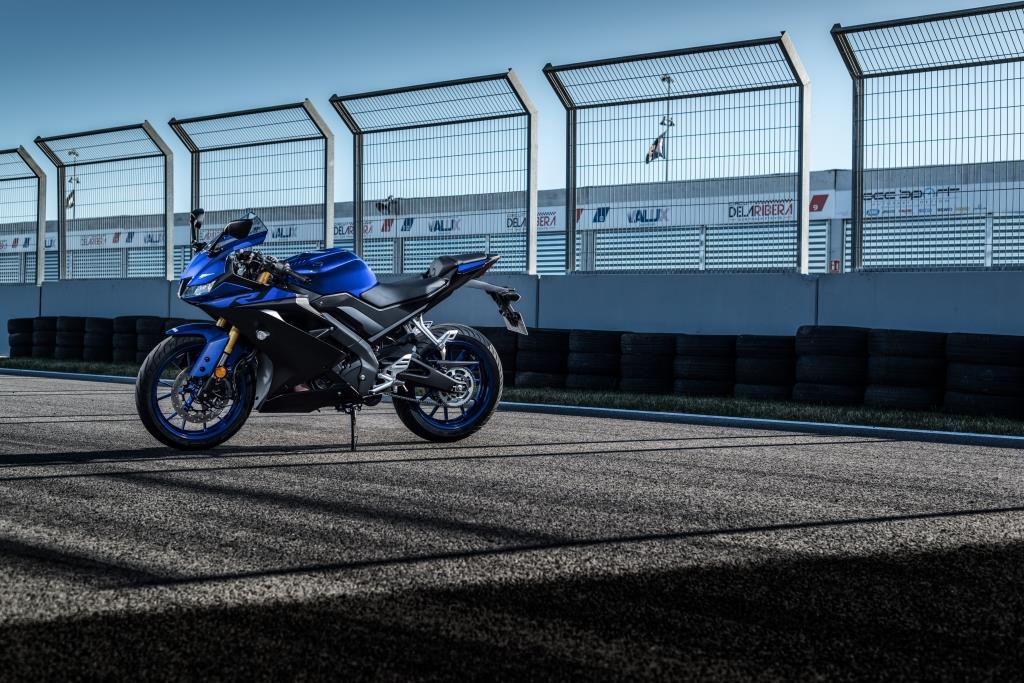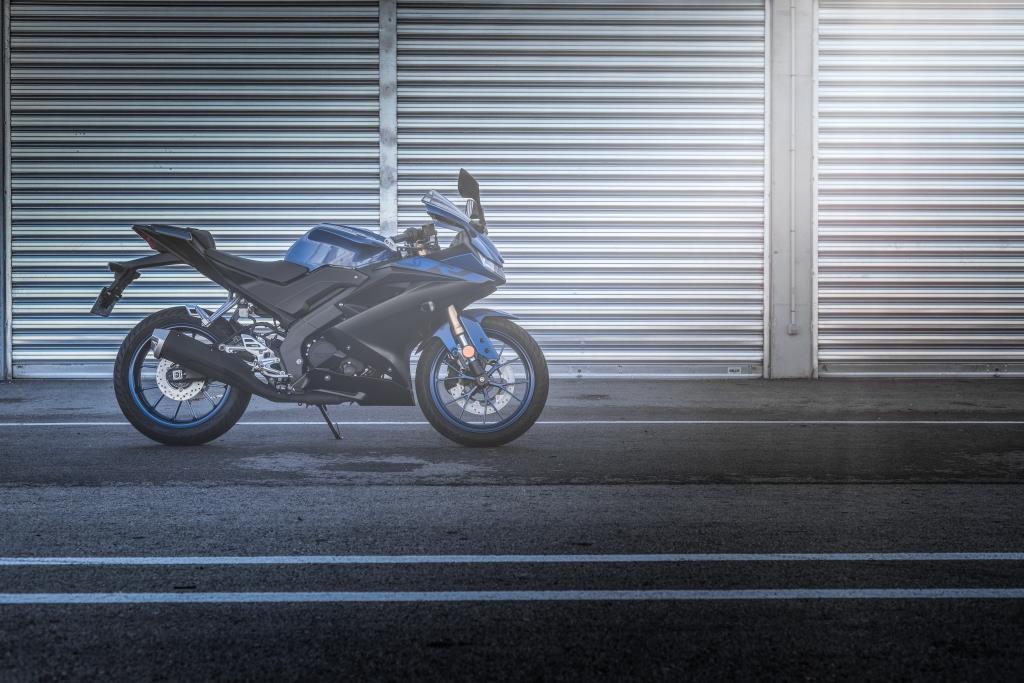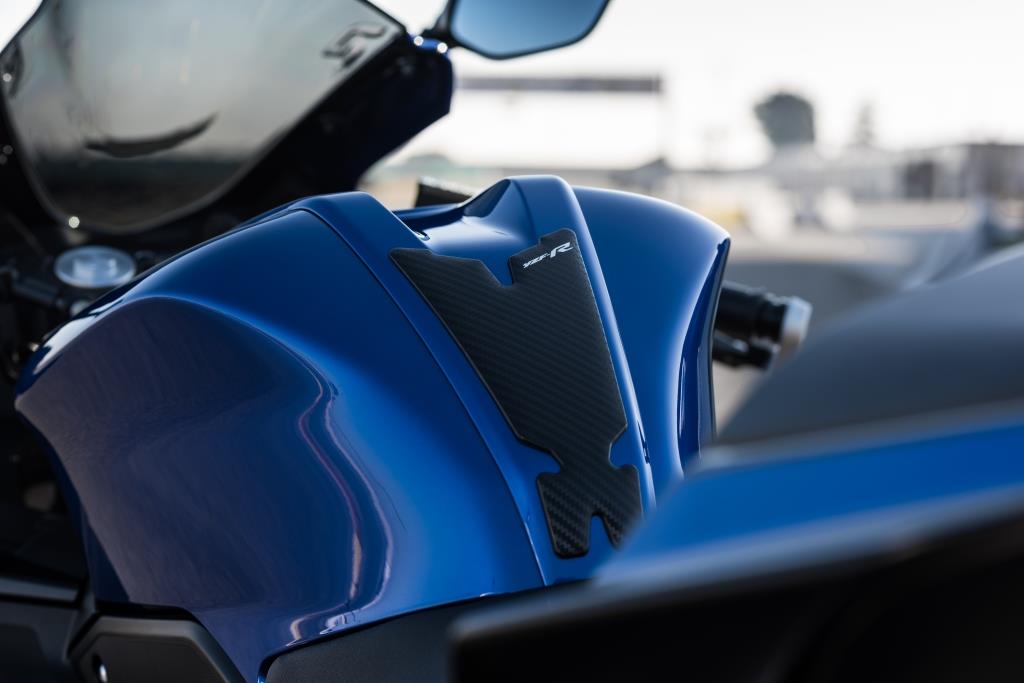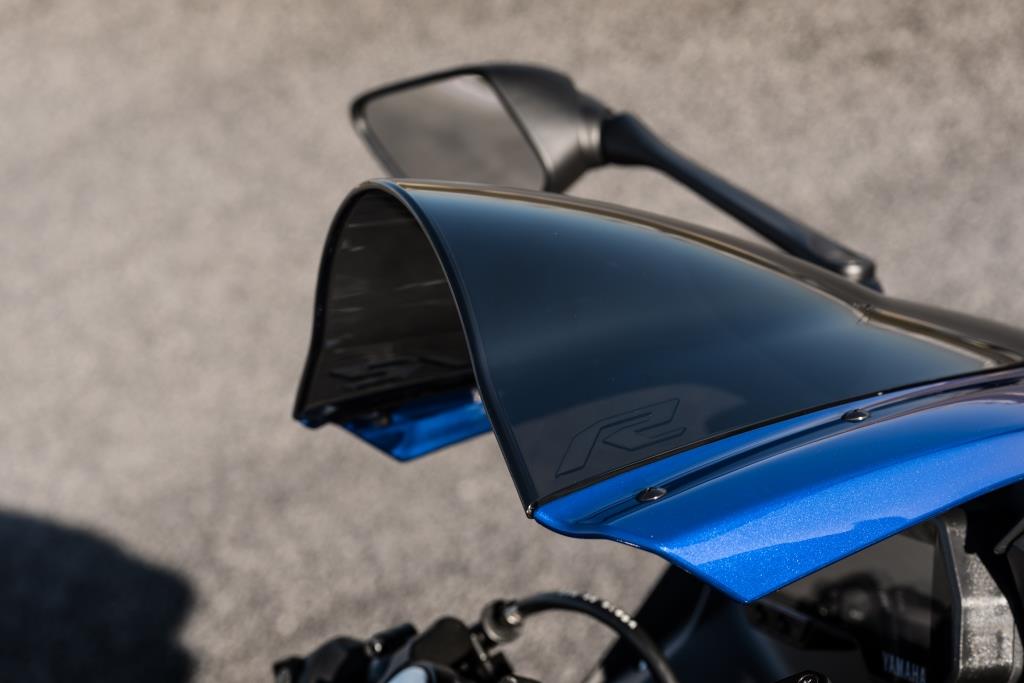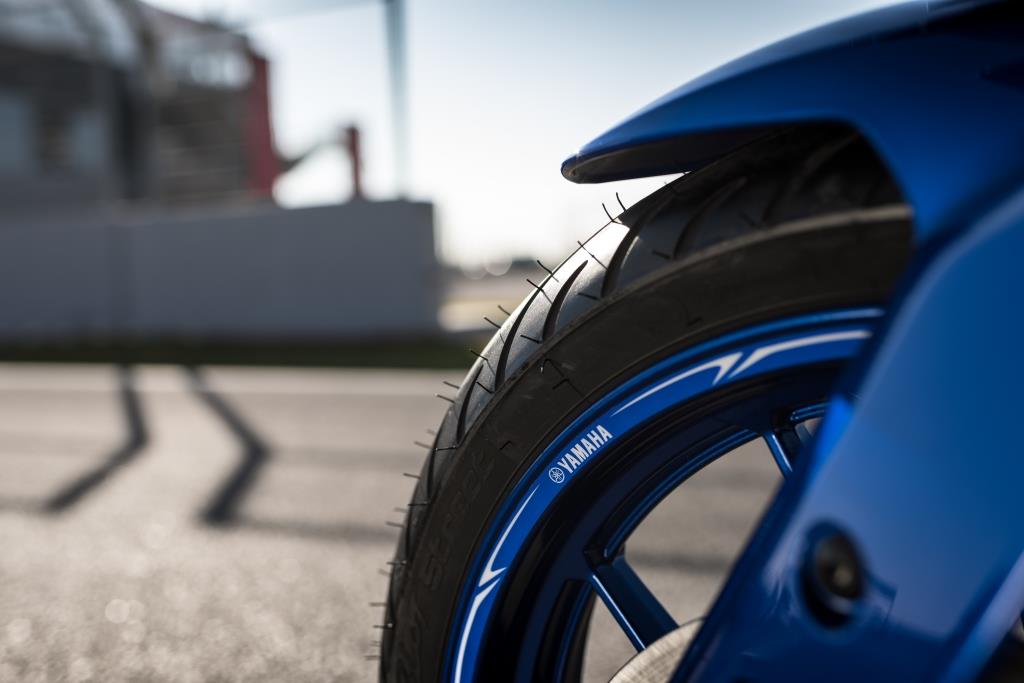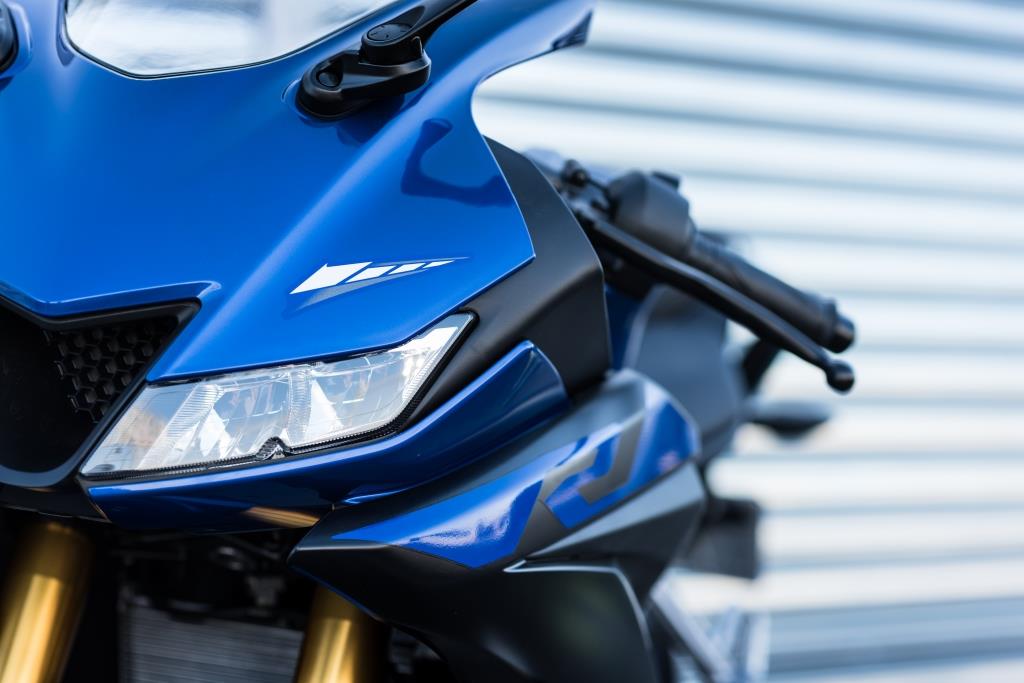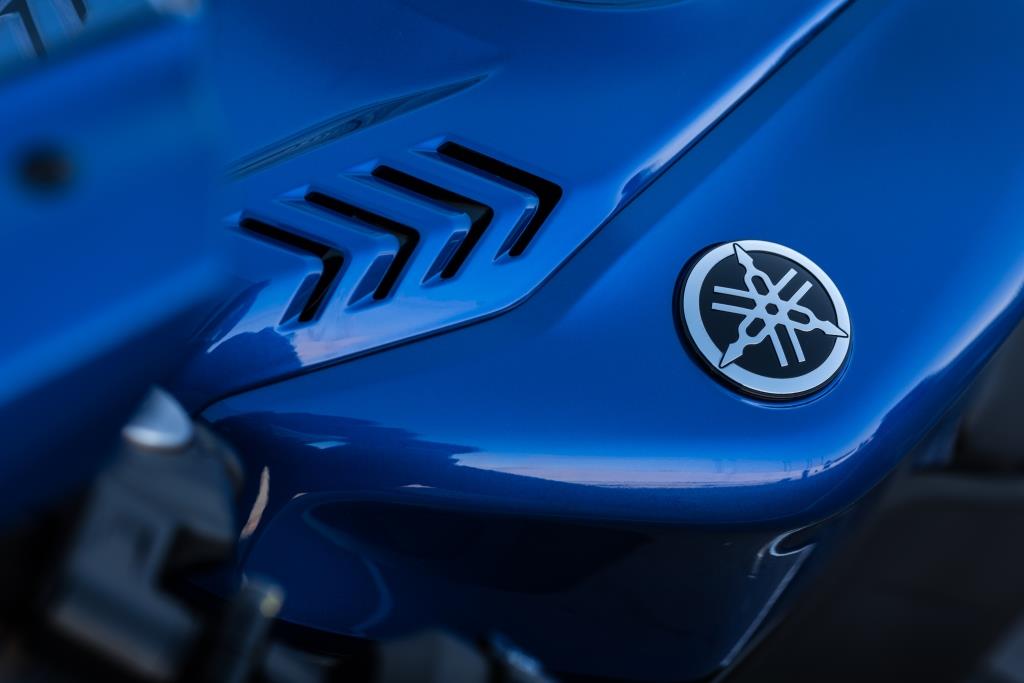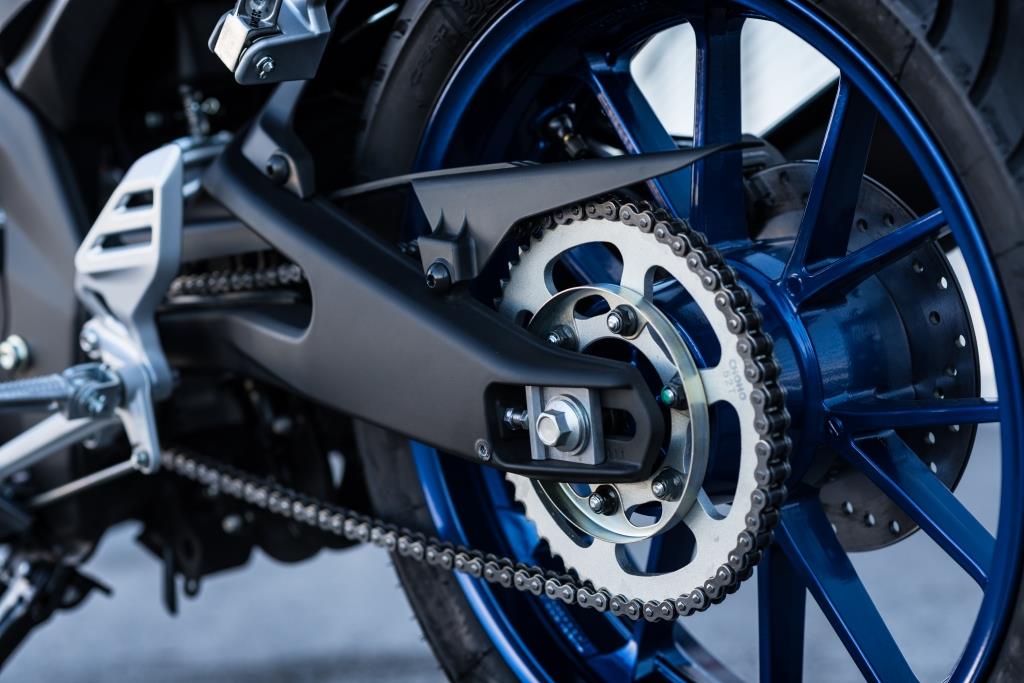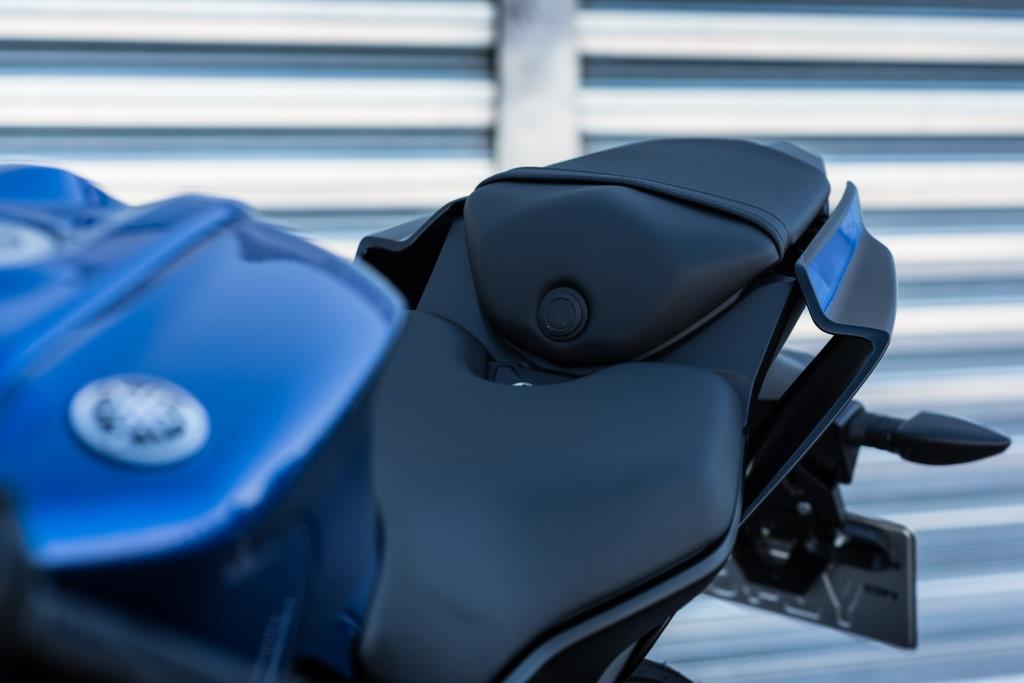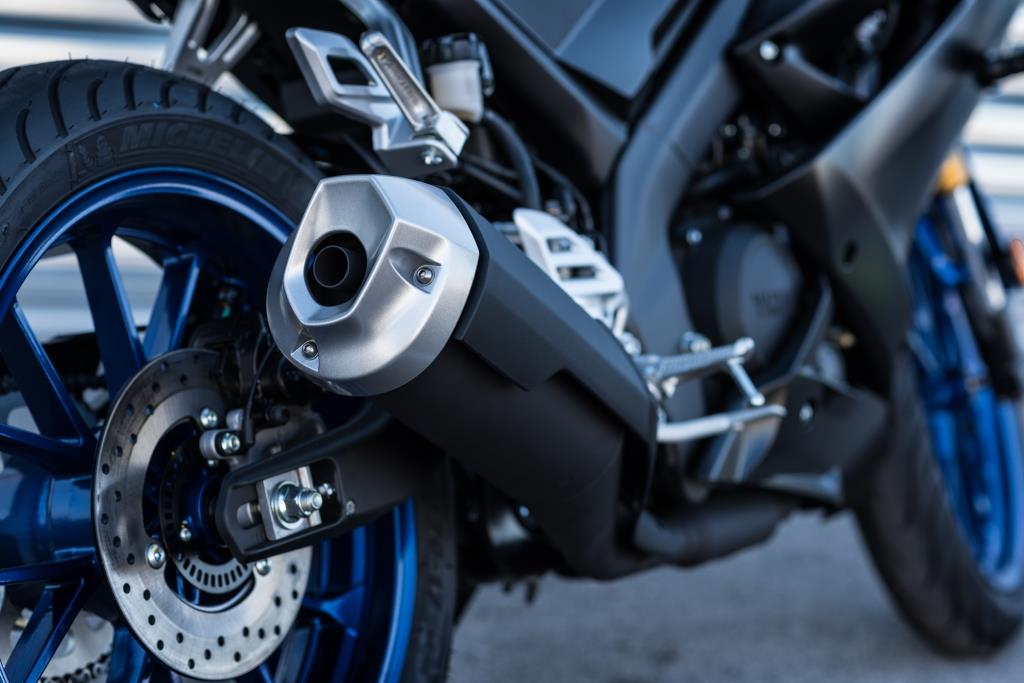For most folk, riding an A1-compliant 125 learner bike is a bit like a nasty bout of ‘flu. It’s not much fun, there’s not a lot you can do to avoid it, and you just aim to get over it as quick as you can.
But Yamaha’s engineers aren’t having that. Okay, they’re limited to 15bhp in terms of outright power for an A1 bike (there’s a power-to-weight limit of 0.1kw/kg as well so it has to weigh at least 150 kg if it’s making the maximum power). But on this new 2019 YZF-R125, the firm’s fitted a proper variable valve actuation system to the intake side of the cylinder head, giving the little four-valve single a much better spread of power. Normally used in cars and much bigger bikes, variable valve setups let you change how the valves open – how much, how long for, and at what point in the combustion cycle. Using different valve opening profiles for low and high engine speeds lets you get more torque and power, with better efficiency, than just using one valve timing setup for the whole rev range.
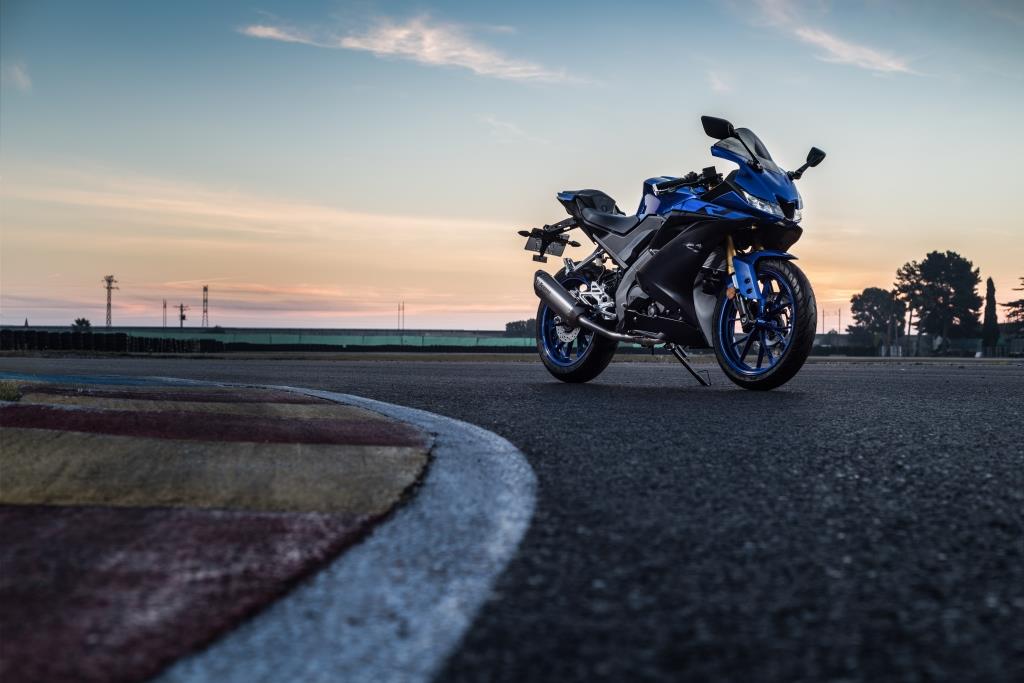
Not content with putting out the first 125cc four-stroke motor with variable valves, Yamaha’s also given the rest of the R125 a bit of a tidy up too. There’s an updated chassis with a new swingarm design, wider rear tyre, racier bodywork and a more aggressive riding position, while the dash is updated with a new LCD panel, and it’s even got improved fuel consumption, down by five per cent.
We’re riding the R125 at Valencia, alongside the updated R3 mini-supersports bike. Due to the way the launch was organised, we actually rode the 125 on track first, at the Circuit de la Ribera go-kart track. Thrashing a learner bike round a circuit is always great fun – you have little in the way of grunt of course, so every mile-per-hour is jealously guarded, and you need to keep up corner speed to make any sort of progress. We were out with R3s, ridden by journos from other countries, so we had to do our best to try and keep with them, at least in the twistier sections…
And the little 125 is doing alright. It wears Michelin Pilot Street rubber, which is very much a commuter/city tyre, but there’s decent grip and feedback available. They’re not as good as the GPR300 Dunlops on the R3, but have more than enough performance for the 125. The front brake is a boon, with its radial four-piston caliper giving solid power and feel, while the new stiffer suspension settings give the feel of a much bigger bike. It’s super-nimble of course, but is stable on the straight too.
We’re not getting much chance to sample the VVA variable valve timing sadly – frantic gearchanges and even a dab of clutch slip is essential to keep the 125 on the boil. It’s not till the next morning, when we set out on our road ride, that I see much of the performance below about 9,000rpm. And it’s an impressive little package. The VVA setup uses a two-piece rocker arm, which is operated by two cam profiles, one high-speed and one low-speed. Above 7,400rpm, an ECU-operated solenoid pushes a pin into place, which locks the rocker arm together, and the high speed cam takes over operations. Below 7,400 revs, the pin unlocks the arm, and the low-speed cam comes back into play, opening the inlet valves with less duration and lift.
You don’t notice the switch when it comes, but Yamaha’s given us a little ‘VVA’ display on the LCD dash, which comes on when the system moves into high-speed mode. What you do notice is a much stronger, gruntier power delivery than you’d expect from a 125. The eighth-litre machines I’ve ridden of late have been far weaker, and the R125’s even got a semblance of midrange and a proper power curve. Fuelling is clean, the clutch is super-light, and the gearchange is snickety-slick. Battling through the Valencian rush hour, the little Yam has enough puff to keep ahead of all but the fastest city traffic, and the super-skinny profile means you can get through the tightest of jams.
Once we get out of the urban sprawl, the R125 struggles a little bit of course. Motorways and dual carriageways aren’t happy places when you’ve only got 15bhp, but we do our best to keep up. Careful tucking-in, and a dab of slipstreaming gets an indicated 130kph – 80mph, and on one downhill section it crept up to over 140kph, nearly 90mph. Impressive stuff, and no doubt thanks to the aerodynamic bodywork as much as the new engine.
As on track, twistier roads are more fun, where you can use the R125’s strengths – tiny weight, agile steering and good brakes. On one downhill stretch of asphalt, I had a proper ball chasing the Yamaha test rider, late and easy on the brakes, hanging off like a demon, trying to keep up momentum everywhere.
Back at the hotel, our ride is done. And the little R125 has definitely impressed. The engine is unique with its variable valve setup, and the performance adds a new dimension to the 15bhp-limited sector. The chassis does just as well, and the high-quality design and feel to the rest of the bike will give massive owner satisfaction. If I had been riding one of these when I was 17, I’d have been a very chuffed lad indeed.
So if you’re stuck with the nasty ‘flu of learner rider life, the R125 could well be the answer. Like a powerful dose of painkillers, a hot toddy and a couple of days in bed, it will definitely help make 15bhp far more tolerable, until it finally passes…
ENGINE
The base spec is pretty standard – a liquid-cooled SOHC four-valve single, with a long-stroke layout (52×58.7mm bore and stroke), six-speed gearbox and slipper clutch. The top end is pretty special though – Yamaha’s VVA system on the intake cam uses two cam profiles for high- and low-speed running, improving torque and power, while reducing emissions and fuel consumption. For 2019, the engine also gets larger valves, wider throttle body, larger airbox and an oval-shaped intake port.
FRAME
Steel Deltabox twin-beam design is stiff and light enough for a learner machine. The alloy swingarm has been modified with a wider pivot section, for more rigidity and better handling.
BRAKES
New hose layout and ABS system, plus different pad spec sharpens up the braking.
EQUIPMENT
New LCD dashboard with bar tacho, gear indicator, shift light, fuel gauge and loads more info. Headlights are now full LED units, top yoke has an M1-style machined look, and there’s a proper MotoGP-style front brake lever protector.
COLOURS
Available in R6-style Yamaha Racing Blue, Tech Black, and Fluorescent colour schemes.
R125 SPECS:
Price: £4,499
Engine: 4v single, SOHC, liquid cooled, 125cc, variable valve timing
Bore x stroke: 52×58.7mm
Compression ratio: 11.2:1
Max power (claimed) 15bhp@10,000rpm
Max Torque (claimed) 11.5Nm@8,000rpm
Transmission: six speed gearbox, wet slipper assist clutch, chain drive
Frame: steel Deltabox beam type
Front suspension: 41mm USD fork
Rear suspension: Aluminium swingarm, monoshock
Brakes: 292mm disc, four-piston radial mount caliper (front), 220mm disc, single-piston caliper (rear), ABS.
Wheels/tyres: Cast aluminium/Michelin Pilot Street, 100/80 17 front, 140/70 17 rear
Rake/trail: 26°/95mm
Wheelbase: 1,325mm
Kerb weight (fully fueled): 142kg
Fuel capacity: 11 litres
Rider Aids: ABS.
